Estate Jewelry: Witch Hearts and the Victorian Onyx Mystery
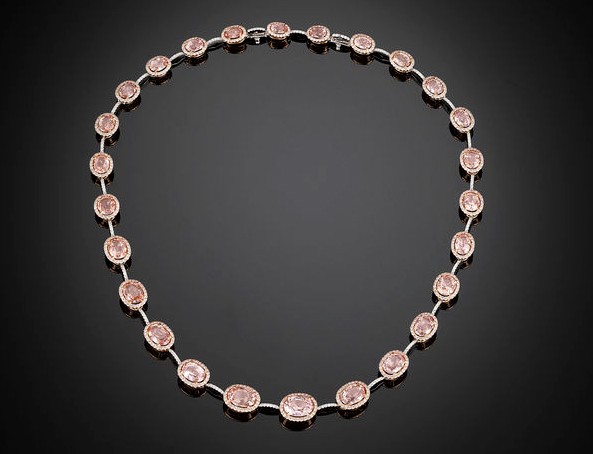
Many people don’t realize that sapphire comes in all sorts of colors, not just blue. Sapphire is the gem form of the mineral corundum, and depending on other elements within the stone, it can also be pink, yellow, green — or even red (but if it’s red, it’s a ruby!). Padparadscha is the rarest, most desirable — and most valuable — form of sapphire around. The demand is due to the beautiful color, which is a delicate mix of orange and pink.
Padparadscha comes from Sri Lanka (other countries have produced it, but there is always fierce debate about whether their stones are good enough to be termed “padparadscha”). It’s rare to find stones above two carats in size, and because of the demand, other lesser-quality sapphires are sometimes heat-treated or irradiated to try to achieve the incredible color of a true padparadscha. So this necklace is a pretty big deal. It features 26 padparadschas (a total of 46.04 carats!), all matched in color and lab certified as natural and untreated. The necklace is further embellished with 8.50 carats of diamonds, and the stones are set in 18k rose gold, which perfectly matches the warm pinky-orange hue of the gemstones.
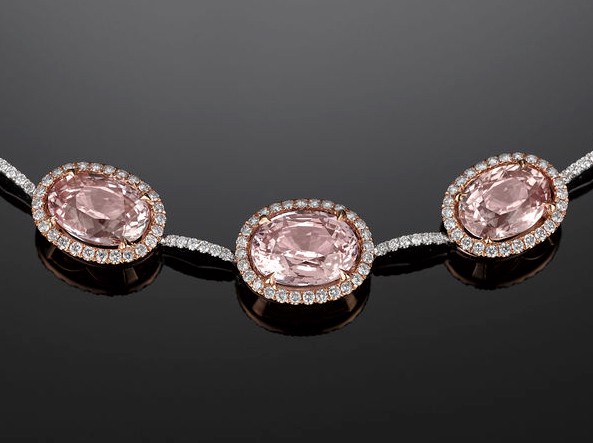
Padparadscha is my favorite gemstone of all time, and if I were given the choice between buying this necklace and buying a house, I’d go for the necklace. It’d probably be a safer investment, too.
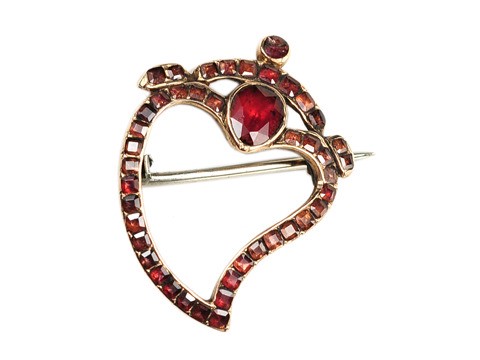
Circa 1790, this is a Witch’s Heart brooch. It’s probably English or Scottish, and features almandine garnets set in 9k rose gold. Witch’s hearts — a heart with a point that curves to the left or right — are loaded with symbolism, and date back to the 14th and 15th centuries. The 18th century viewed them as tokens of love and affection, but in earlier centuries they were often used as protective amulets, to guard the wearer from evil. The dealer notes that, in late-17th-century Scotland, “Tiny examples were often pinned to a baby’s wrap as protection. Often the brooch was hidden in the petticoats of children who were deemed particularly susceptible to harm from ‘evil spirits’ or ‘fairies.’”
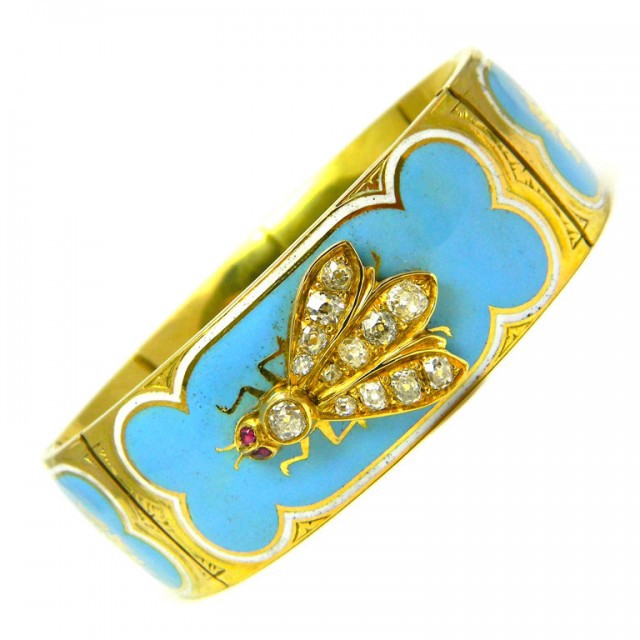
I know I’m always showing you bracelets like this, but I love them and I can’t help it. This one is French (really, could it be from anywhere else?), circa 1900, in 18k gold with gorgeous turquoise and white enameling and a central insect with a diamond-set body.
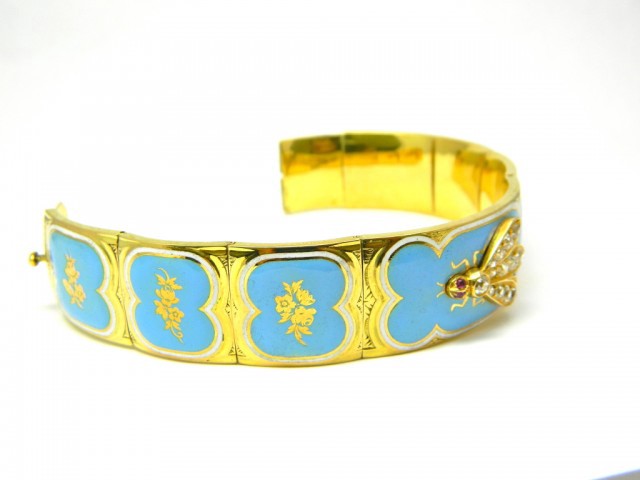
I think it might be a bee, which is a symbol of resurrection and immortality, and was also a traditional emblem of the rulers of France (Napoleon used it, too).
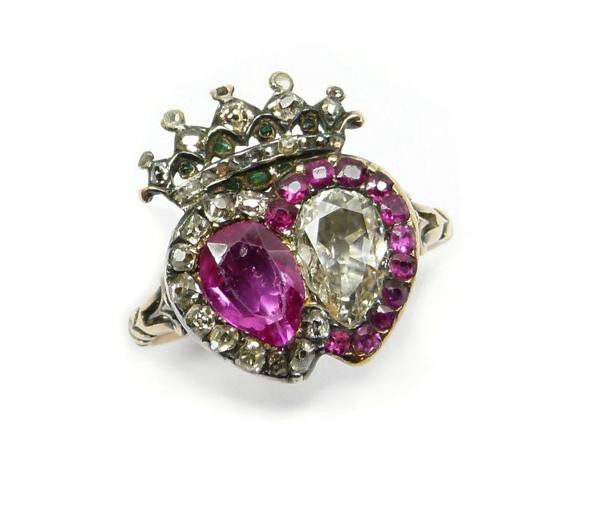
I’ve featured a double-heart ring in the past, but this one is even earlier. (And prettier!) Circa 1780, it’s a ruby and diamond double heart cluster ring, with a pear-shaped ruby surrounded by diamonds, next to a pear-shaped diamond surrounded by rubies. A crown of diamonds sits above, and the stones are set in silver and gold — silver to complement the diamonds, gold to complement the rubies. Again, rings like this often symbolized love (the conjoining of two hearts), while the crown represented loyalty.
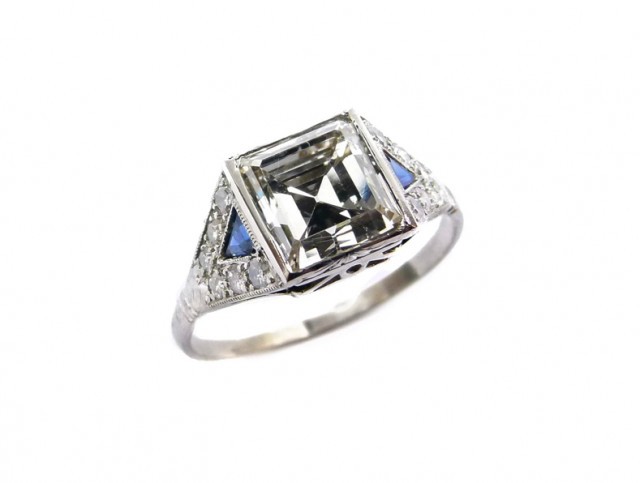
I wouldn’t normally highlight two pieces from the same dealer in one month, but S.J. Phillips has another ring that knocked my socks off, and I couldn’t choose, so I’m just going to go with both. This ring is classic Art Deco, with a beautifully crisp, square-cut center diamond flanked on each side by more diamonds and two small, triangular-cut sapphires. The stones are set in platinum. France, circa 1925.
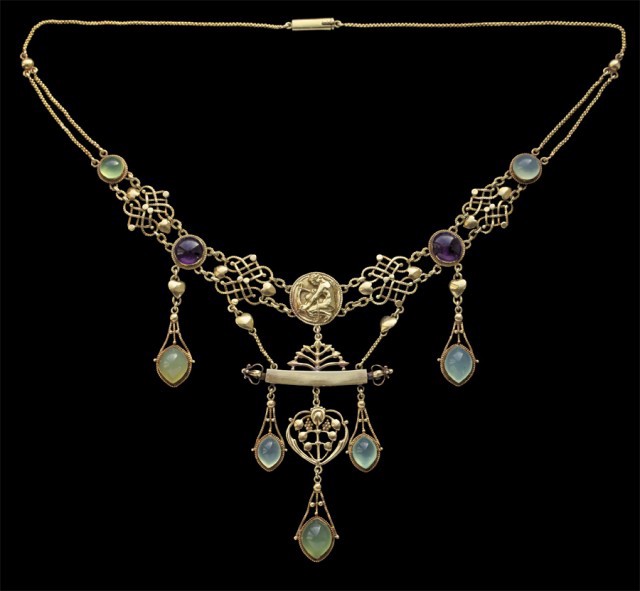
This is the Apollo Necklace,* circa 1904, by Henry Wilson (1864–1934). Wilson was a master of the British Arts & Crafts movement, and was an architect as well as a designer. He was renowned for combining design various influences in his work, and this 18k gold necklace taps into mythology, featuring a kneeling Apollo with his bow and arrow. Below him hangs a tree of life, and to each side he is flanked by intricate Celtic knots with tiny heart embellishments. The stones used are cabochon-cut amethysts and moonstones — both stones common to Arts and Crafts jewelry because they were beautiful but still affordable.
*(I apologize –- the website won’t take you directly to this piece, so click on “British Arts & Crafts circa 1900” at the left, and you’ll see it.)
The necklace was commissioned by Sir Hubert Llewellyn-Smith (a high-ranking English public servant from 1893 to 1928), for his wife, and it still has its original heart-shaped leather case.
A side note: if you’ve ever been to the amazing Cathedral of Saint John the Divine in Manhattan, you’ve probably seen Wilson’s work. He’s the designer of the huge set of bronze doors on the west side of the Cathedral on Amsterdam Avenue. The doors were unveiled in 1936, and consist of 48 panels depicting scenes from the Old and New Testaments and the Apocalypse. Wilson also designed another set of doors in the U.S., for Boston’s Salada Tea Company. Those doors (circa 1927) are still in place on Stuart St., and they show the step-by-step process of tea cultivation. There are some vintage shots of them on the Boston Public Library’s Flickr site.
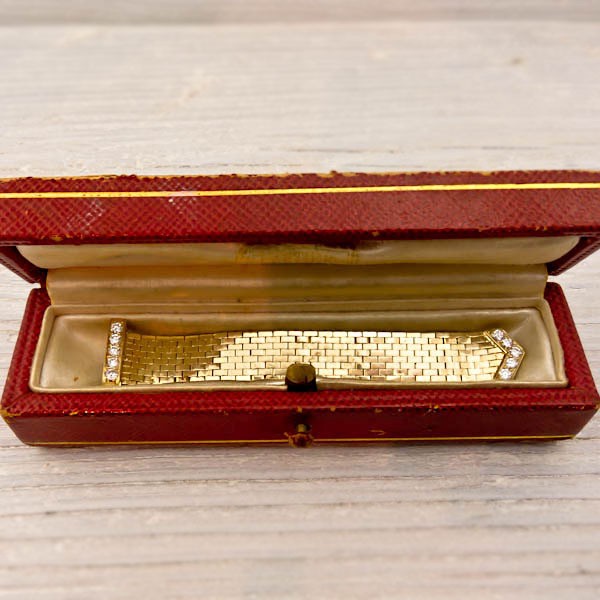
This is so fun! Circa 1945, it’s a Cartier buckle ring, in yellow gold with brilliant-cut diamonds.
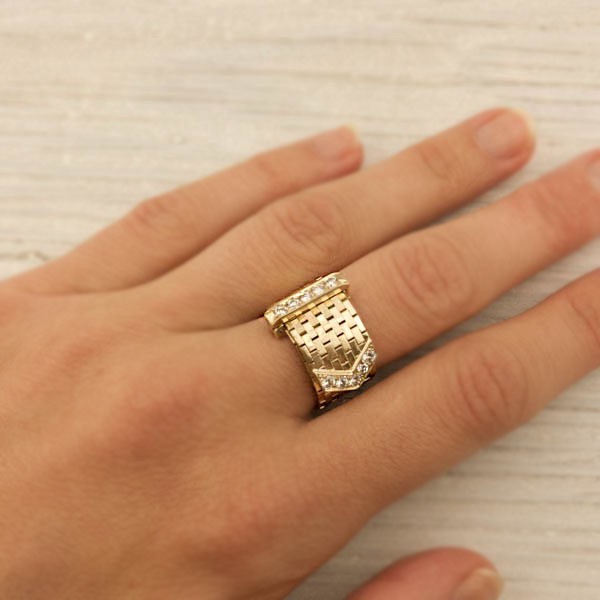
The bracelet-inspired design means it can fit any size finger.
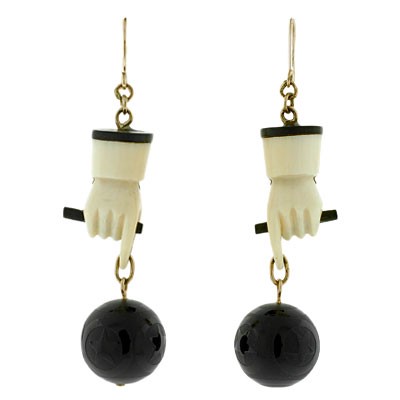
These early Victorian ivory and onyx earrings are very unusual and quirky, and definitely require some further research. Circa 1850, each earring consists of a hand-carved ivory fist, holding a baton. Dangling from each outstretched thumb and forefinger is a finely carved solid onyx ball, engraved with a pattern of rings and stars. I have no idea what this all means, but hello, they’re Victorian. It must mean something! The scepter, the baton and the “Hand of Justice” (although I think the HoJ usually has the forefinger and middle finger extended) are all symbols of power that have been used by rulers like Charlemagne and Napoleon, but what would they be doing on fun little earrings? Especially for WOMEN! Good god, no. So there must be something else. And what of the rings and the stars? It is all just a designer’s flight of fancy? So whimsical, yet so mysterious. I love jewelry.
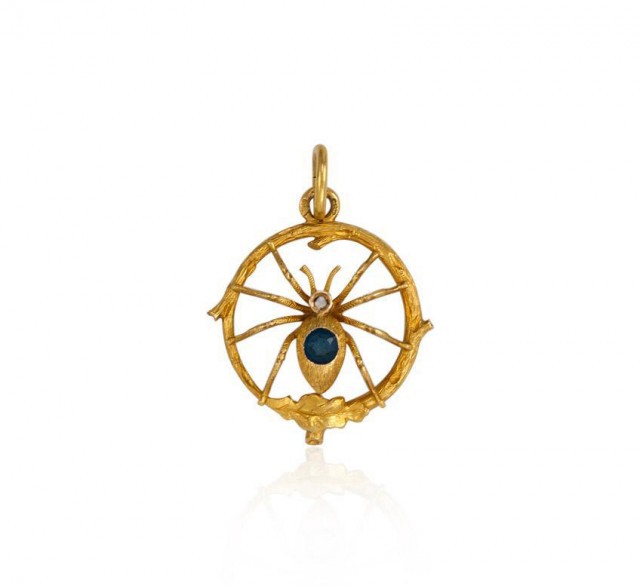
Circa 1905, a 14k gold Austro-Hungarian spider pendant, with a sapphire-embellished belly and a beautifully modeled branch and leaf surround. I would like to own this very, very, very much.
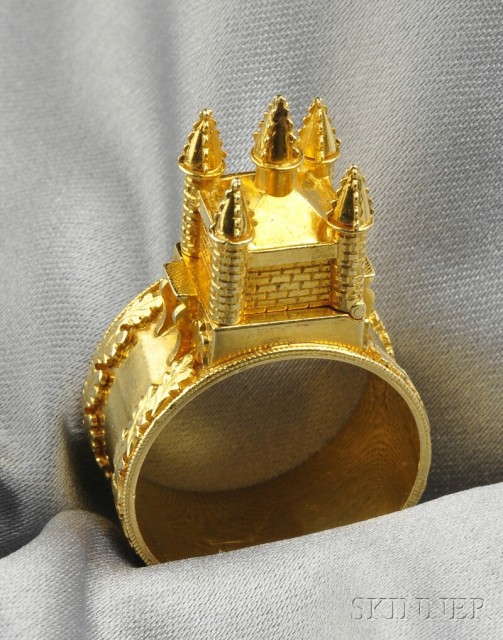
Skinner is holding a Fine Jewelry auction on March 13, and this ring jumped out at me. It’s a Jewish marriage ring, in 18k gold with a floral-bordered band and a hinged central tower that opens up to reveal a little inner compartment.
Jewish marriage rings are an ancient custom. A lot of beautiful examples date to the 16th century, and many are housed today in museum collections (here’s one at the Ashmolean). The little building is believed to represent Solomon’s temple, the synagogue, or the home of the married couple. Often the words Mazel Tov (Good Luck) or the initials “MT” are inscribed somewhere within the design, and some of the rings are so heavy and ornate that they’d be unwearable on a daily basis. They were basically only meant for use during the wedding ceremony, although I’ve read in the past that, post-wedding, they may have been worn hanging from a necklace.
Previously: A Cuff, a Spear, and a Window Locket.
Monica McLaughlin would also like to point out these shoes.